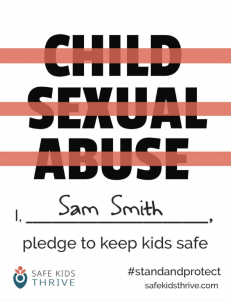Read the Report
Home / Read the Report
Executive Summary
The Massachusetts Children’s Trust and the Massachusetts Legislative Task Force on the Prevention of Child Sexual Abuse are pleased to announce the release of the 4th edition of the safety manual “Steps Toward Child Abuse Prevention & Creating Safe School Environments (2024).”
The Manual has been updated and revised every few years to ensure that it remains current and reflects the latest information and guidance on creating, evaluating, and sustaining policies, procedures, and protocols for the proactive prevention of child maltreatment and child sexual abuse in Massachusetts schools. In addition to describing the major elements of prevention, the latest version includes current research on best practices, links to updated training resources and guidance documents, current DCF policies on mandated reporting, an expanded section on the Commercial Sexual Exploitation of Children, a new section on children and youth with Problematic Sexual Behavior (PSB), and links to free prevention resources and tools on the Safe Kids Thrive website.
Educators can access and explore the Manual via the attached Executive Summary that provides links to its major sections, as well as the option to connect to the Manual in its entirety. It is our hope that this new resource and guidance will provide the tools to help our schools build the strongest possible abuse prevention frameworks for the safety and protection of the students in our care.
1 See Appendix 2 for the Legislative Mandate, and Section VI and Appendix 3 for committees and membership.
- Acknowledgements
- Executive Summary
- Introduction
- How to Read This Report
- Mission & Purpose of Taskforce
- A Brief History of How the Taskforce Was Organized
- The Charge of the Legislative Language
- Key Sections
- Section 1: Developing Policies and Procedures for Child Protection
- Section 2: Screening and Background Checks for Selecting Employees and Volunteers
- Section 3: Code of Conduct and Monitoring
- Section 4: Ensuring Safe Physical Environments and Safe Technology
- Section 5: Recognizing, Responding to, and Reporting Allegations and Suspicions of Child Sexual Abuse
- Section 6: Training About Child Sexual Abuse Prevention
- Additional Considerations
- Applying the Framework: A Five-Year Plan
- Appendices
- Section-Specific Appendices
- Downloadable Resources

Take the Pledge to Keep Kids Safe
Join us and commit to learning how you can protect the children you serve.
Sign Up to Access Your Learning Center
Customized child sexual abuse prevention guidelines to meet the unique needs of any organization that serves children.
- Evidence-informed guidance
- Actionable prevention steps
- Keeps track of your progress
- Tailored learning tracks


